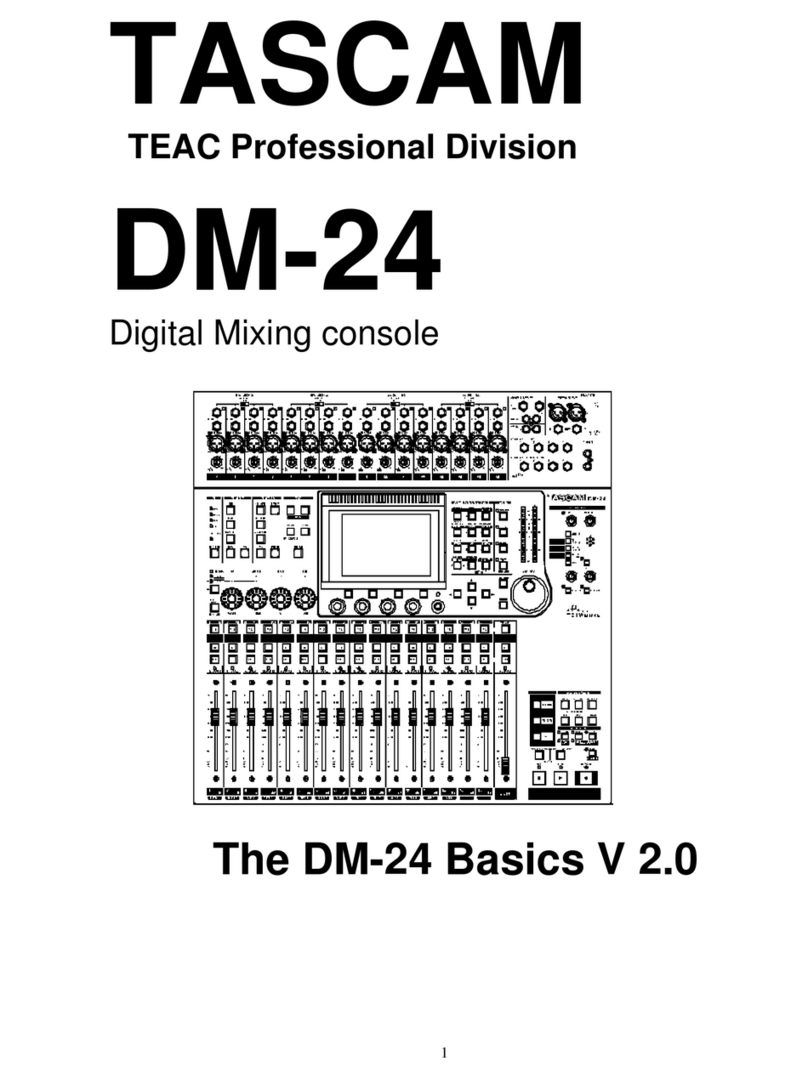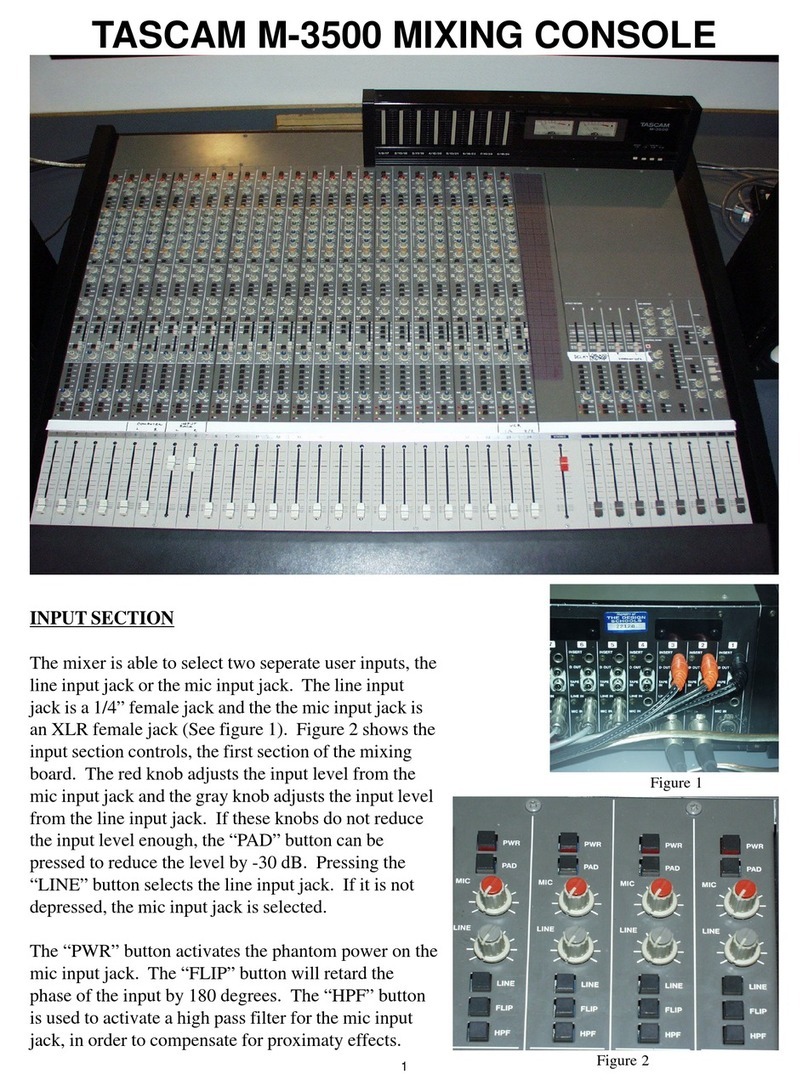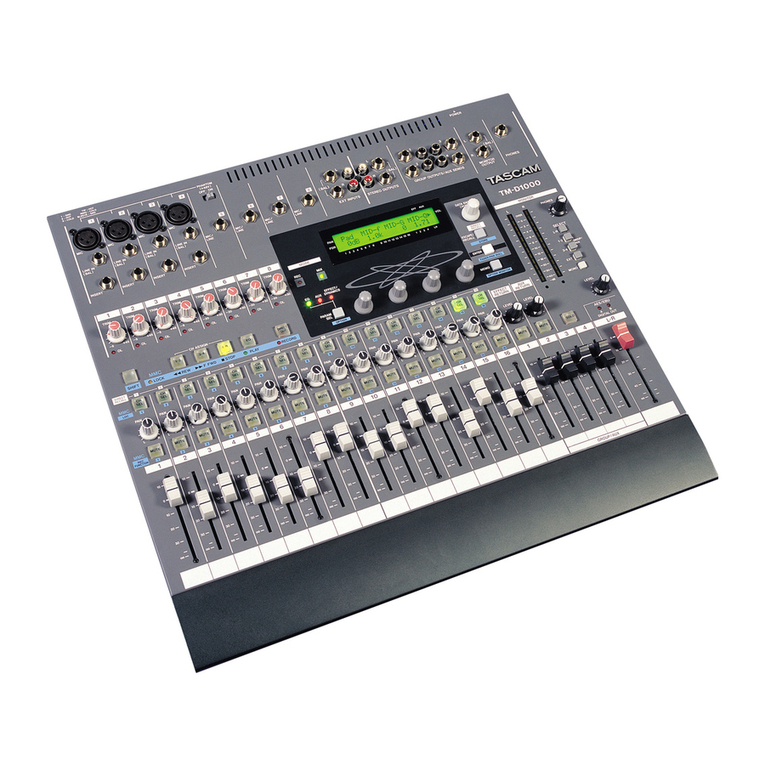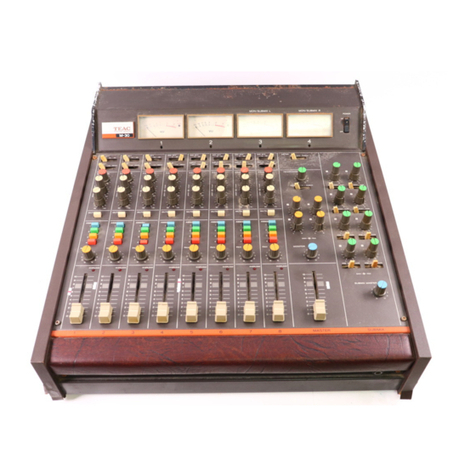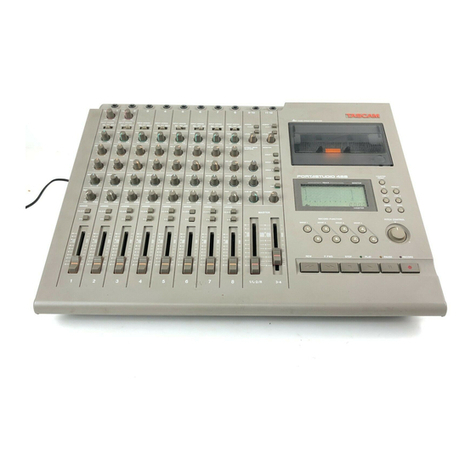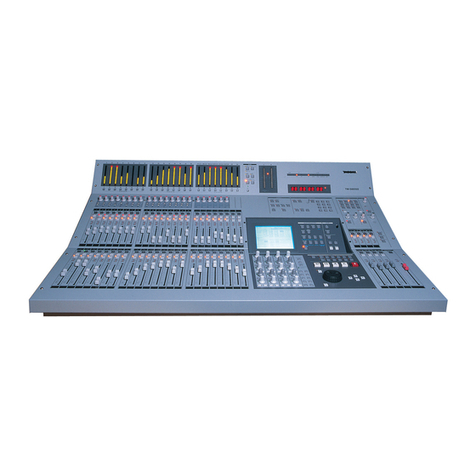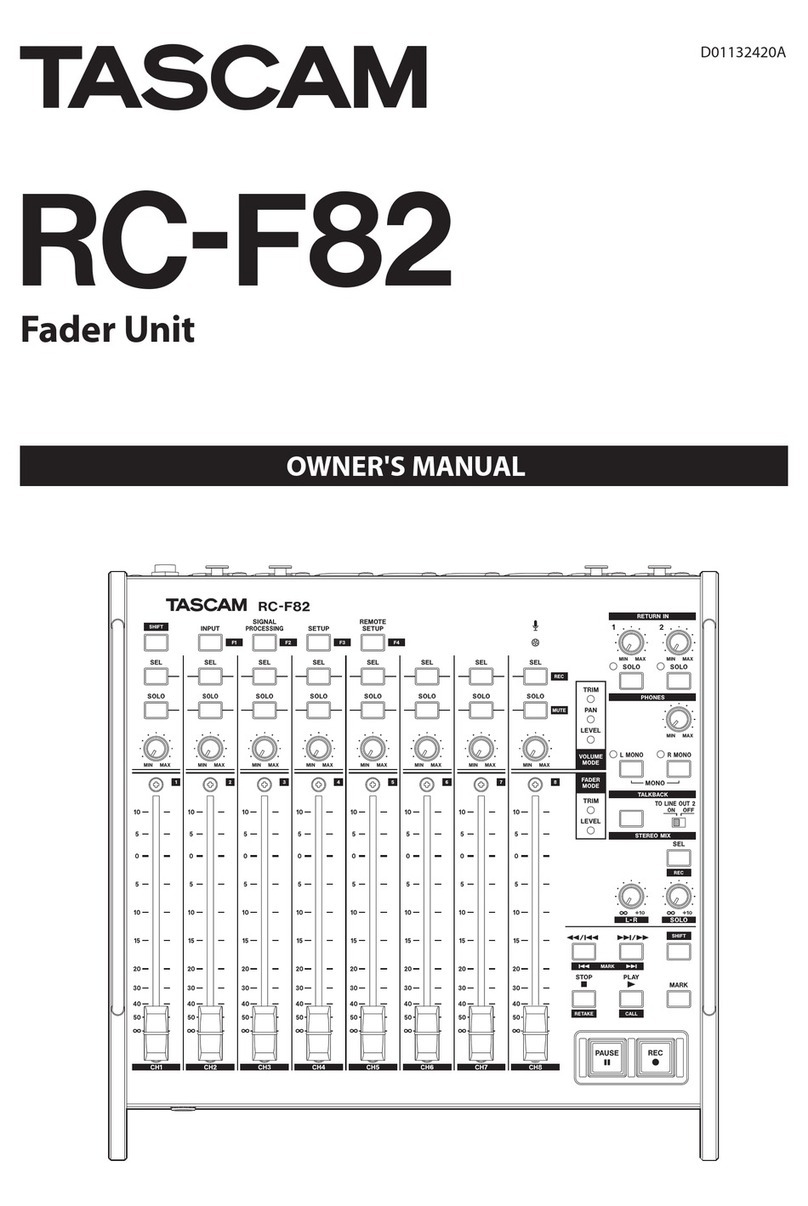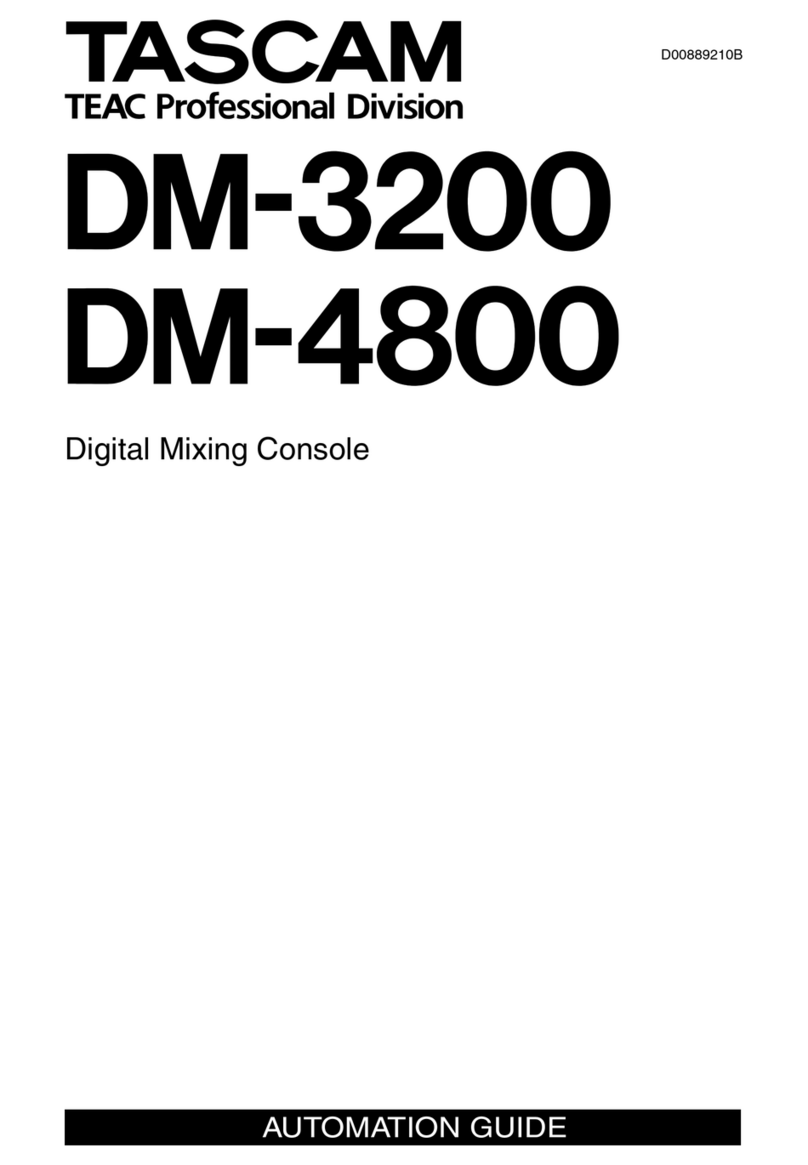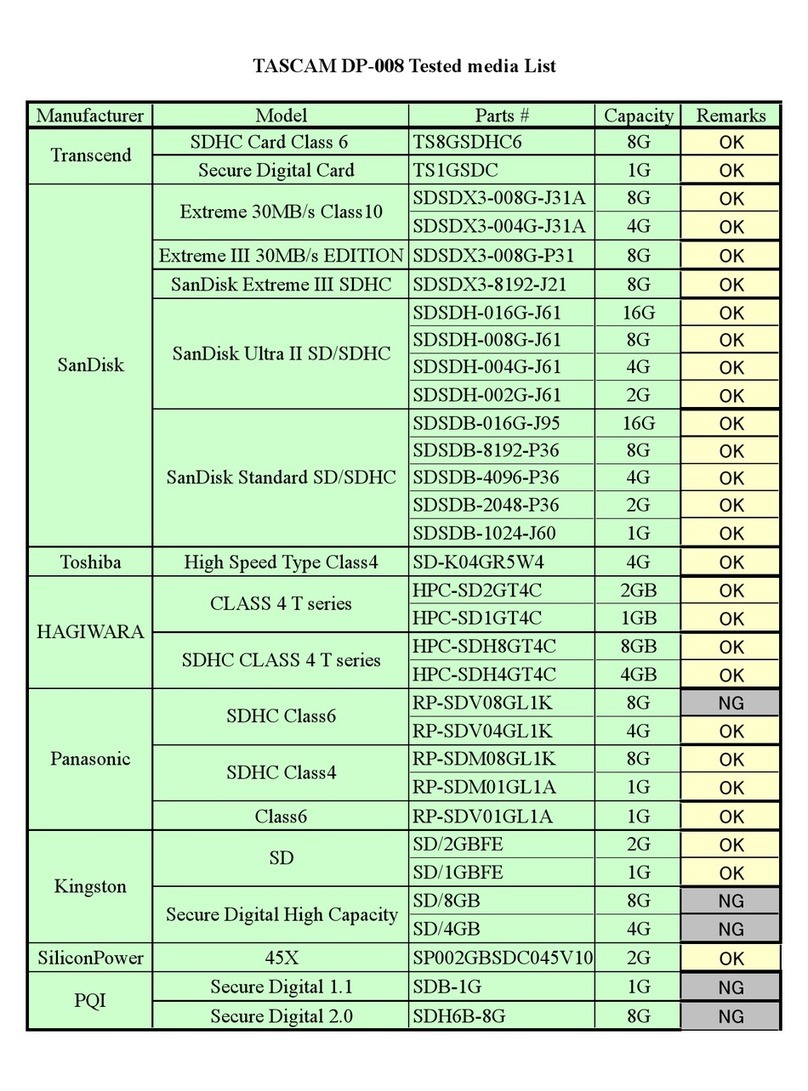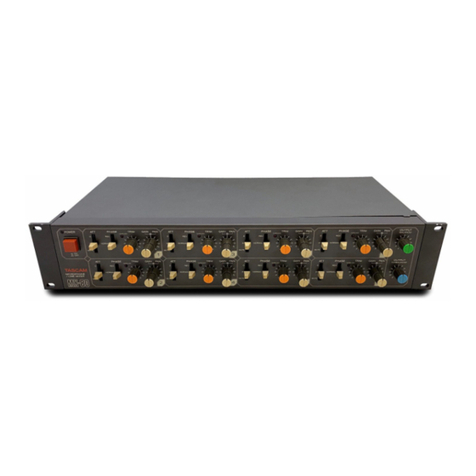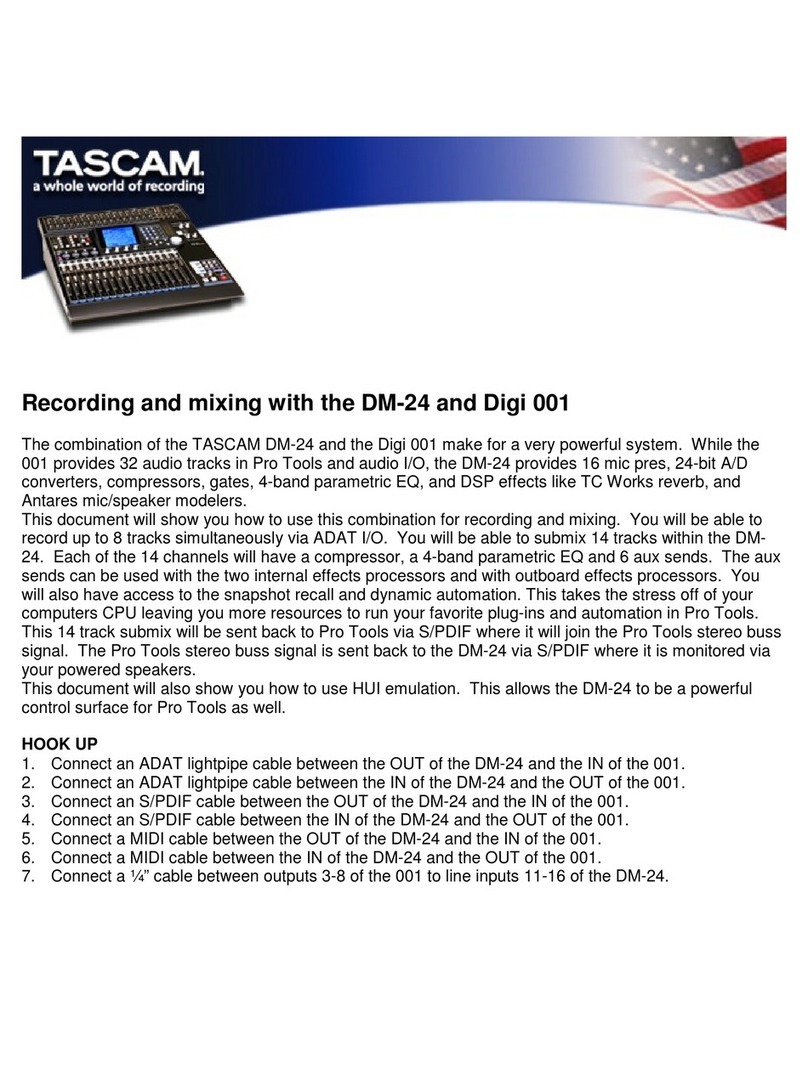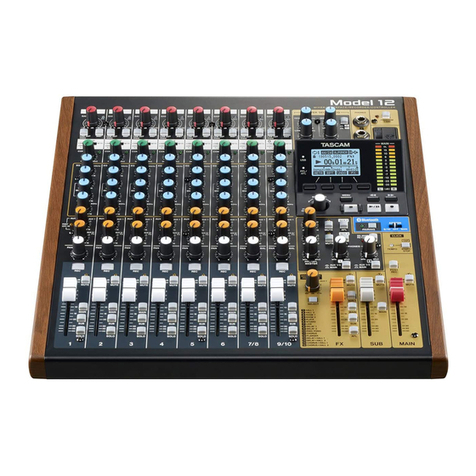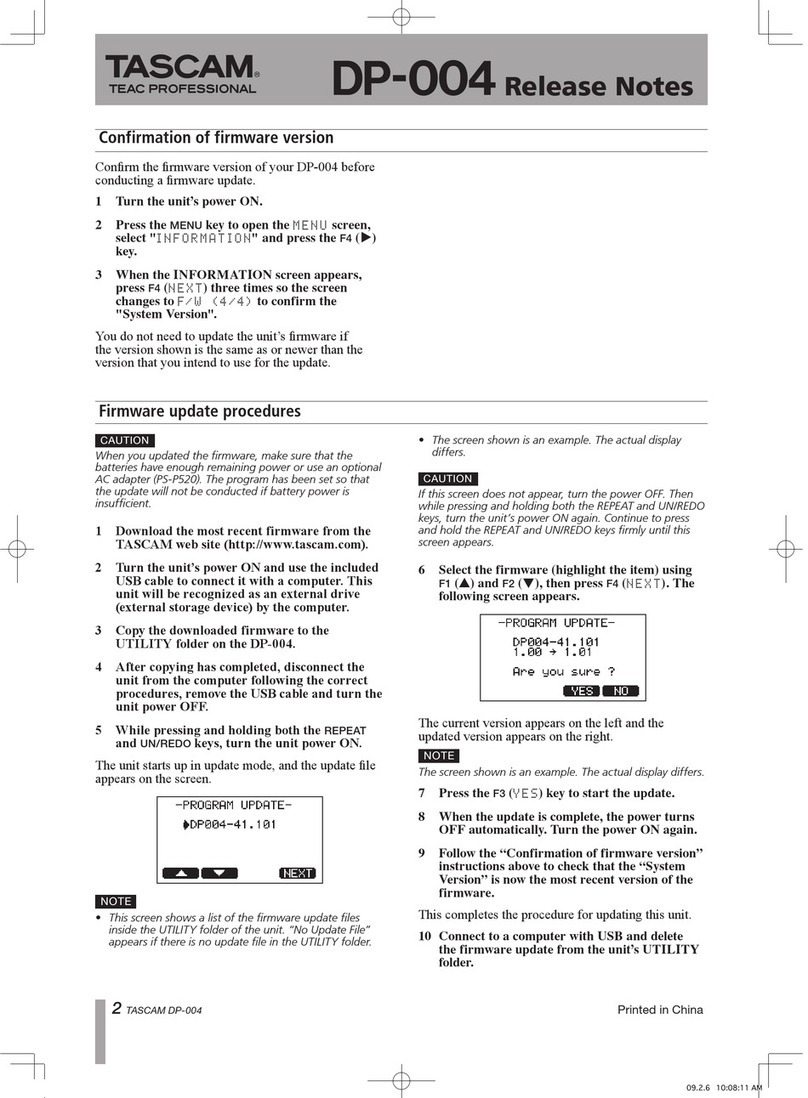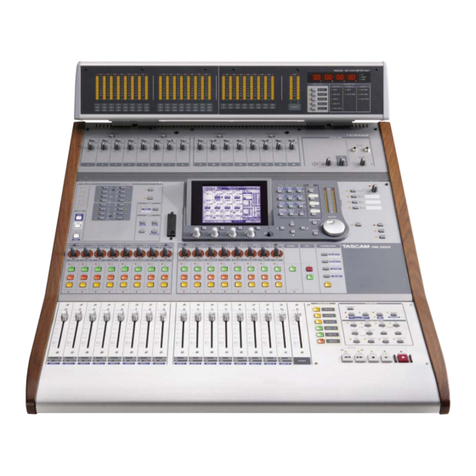
DM-4800 Release Notes
6 TASCAM DM-4800 Release Notes
Maintenance Items
This section describes the Maintenance items for each revision of the DM-4800 software.
Version 1.60
ªOption Slot Cards
At 88.2 kHz or 96 kHz sampling rates, some master
•
clock settings would result in audio transferred from an
IF-TD/DM option card to have reversed Odd and Even
channels. This problem has been fixed.
With an IF-FW/DM MKII card in slot 1 and an IF-SM/
•
DM card in Slot 3, the mixer would not be able to boot
correctly. This problem has been fixed.
With an IF-SM/DM installed, pressing the
•MONITOR
SEL key produced a click noise in the output. This has
been fixed.
With the IF-SM/DM, and Bass Management set to
•
ON, changing the LPF setting of the Bass Management
Section would result in noise in the SubWoofer output
channel. This problem has been fixed.
Noise resulting from changing the Monitor level of the
•
IF-SM/DM has been removed.
With an IF-SM/DM installed, the front panel
•MONO
key normally toggles the IF-SM/DM Downmix function
On or Off. A problem where this function did not occur
correctly has been fixed.
When the output gain of the IF-SM/DM was set to a
•
large value, activating a Buss Mute resulted in the Mute
occurring as a fade over a noticeable amount of time.
This problem has been fixed.
ªRemote Control
If the Internal Timecode Generator (MTC Generate)
•
was started and then deleted from the Control List, the
MTC Timecode would not stop. This problem has been
fixed.
The mixer is now better able to lock to incoming MTC
•
Timecode that has Jitter.
At the 30NDF frame rate, the MTC output could occa-
•
sionally produce incorrect Timecode values. This has
been fixed.
The operation of the Shuttle and
•JOG controls using the
MMC protocol has been improved.
A problem where Timecode Locations were incorrectly
•
stored has been fixed.
ªWhen connected to TMCompanion
With the TMCompanion Meter screen open, rebooting
•
the computer would result in the DM-4800 becoming
unresponsive. This problem has been fixed.
ªMonitor Section
Feedback noise that was created when the
•TO SLATE
key was pressed has been fixed.
Click noise that occurred when the
•TO SLATE or
MONITOR SEL keys were pressed has been fixed.
ªProject
When a project is loaded, the front panel Encoder Mode
•
LED would not reflect the setting from the saved proj-
ect. This problem has been fixed.
When Shutting Down the mixer, even if the Current
•
Project was not Protected, the following popup message
would sometimes be displayed.
“Current Project is protected.”
“Can’t STORE current project.”
This problem has been fixed.
ªOperation
When changing between an FS of 48kHz and 96kHz, the
EQ settings were not correctly restored. This problem has
been fixed.
ªFactory Default Settings.
The Factory Default Setting for FADER SENSITIVITY
has been changed from 3.3kHz to 2.0kHz.
Version 1.50
ªRemote control
Previously, the LCD would unexpectedly switch focus
when both MIDI Faders and the DAW Control Surface
feature was being used an d the master fader touched.
This has been fixed.
ªTASCAM FX / TASCAM FX 2.0
Previously, the Tap Tempo function was not working for
the new TASCAM FX.
This has been corrected.
ªTASCAN FX 2.0
Previously, accessing dynamics libraries could occasion-
ally crash the mixer.
This has been corrected.

